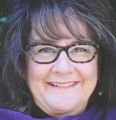WATER SUSTAINABILITY AND ASSET MANAGEMENT ARE INEXTRICABLY LINKED: “Our understanding of water balance as a point to build relationships continues to grow,” stated Paul Chapman, Chair of the Watershed Moments Symposia Series on Vancouver Island (November 2022)

“Our understanding of ‘water balance’ has grown beyond the graphics of how water travels across a landscape, is absorbed or taken up to be distributed again. Water balance at a very key level is about our relationship with water and with each other. We design and build our communities based on our relationship to water. Our neighbourhoods arise from this relationship. Resilient communities will embrace the language and lessons of Sustainable Service Delivery and Eco-Asset Management. Budgets can be aligned with ecological know-how and boots in the stream to steward the critical infrastructure that is our watersheds,” stated Paul Chapman.










